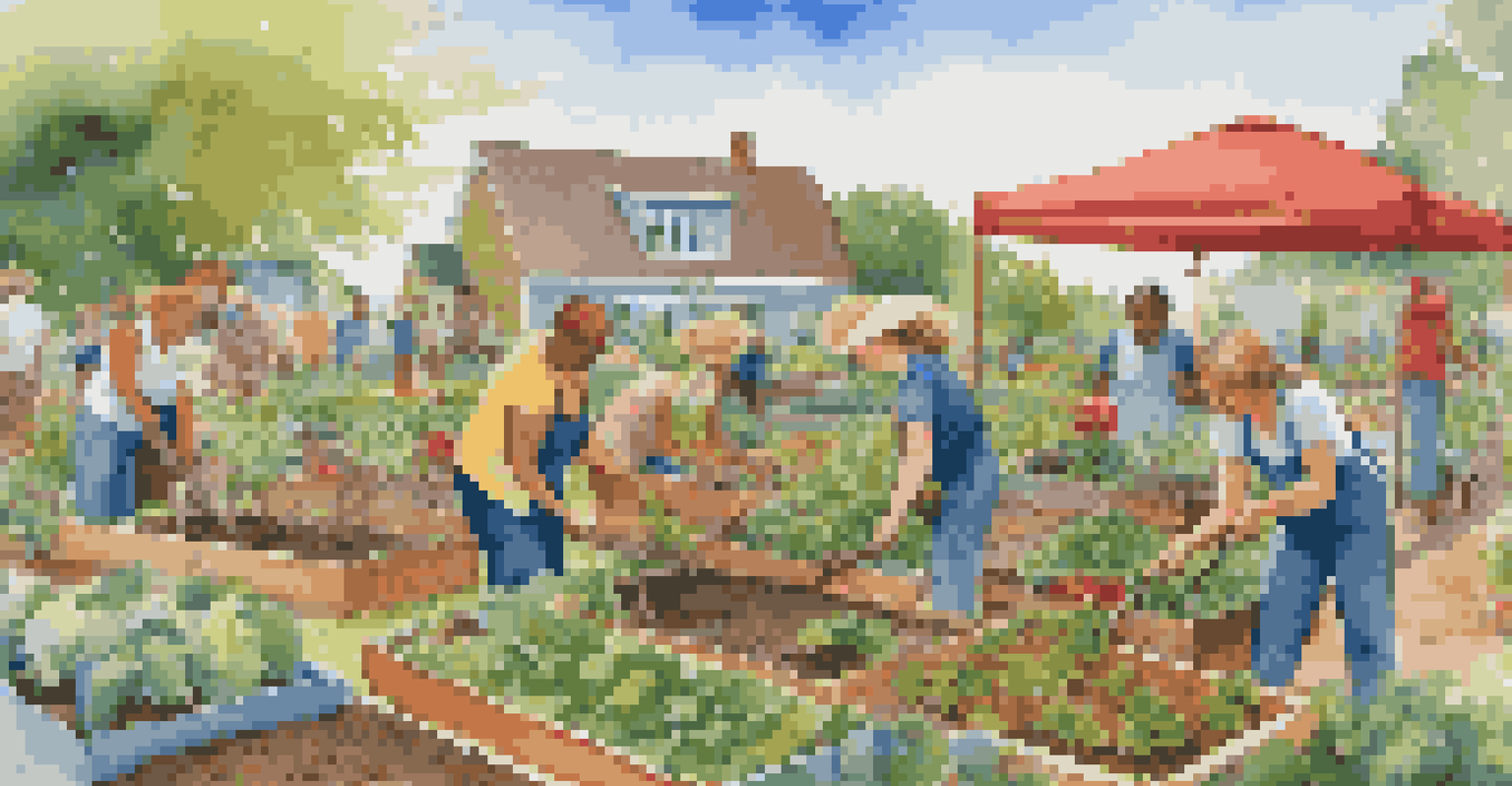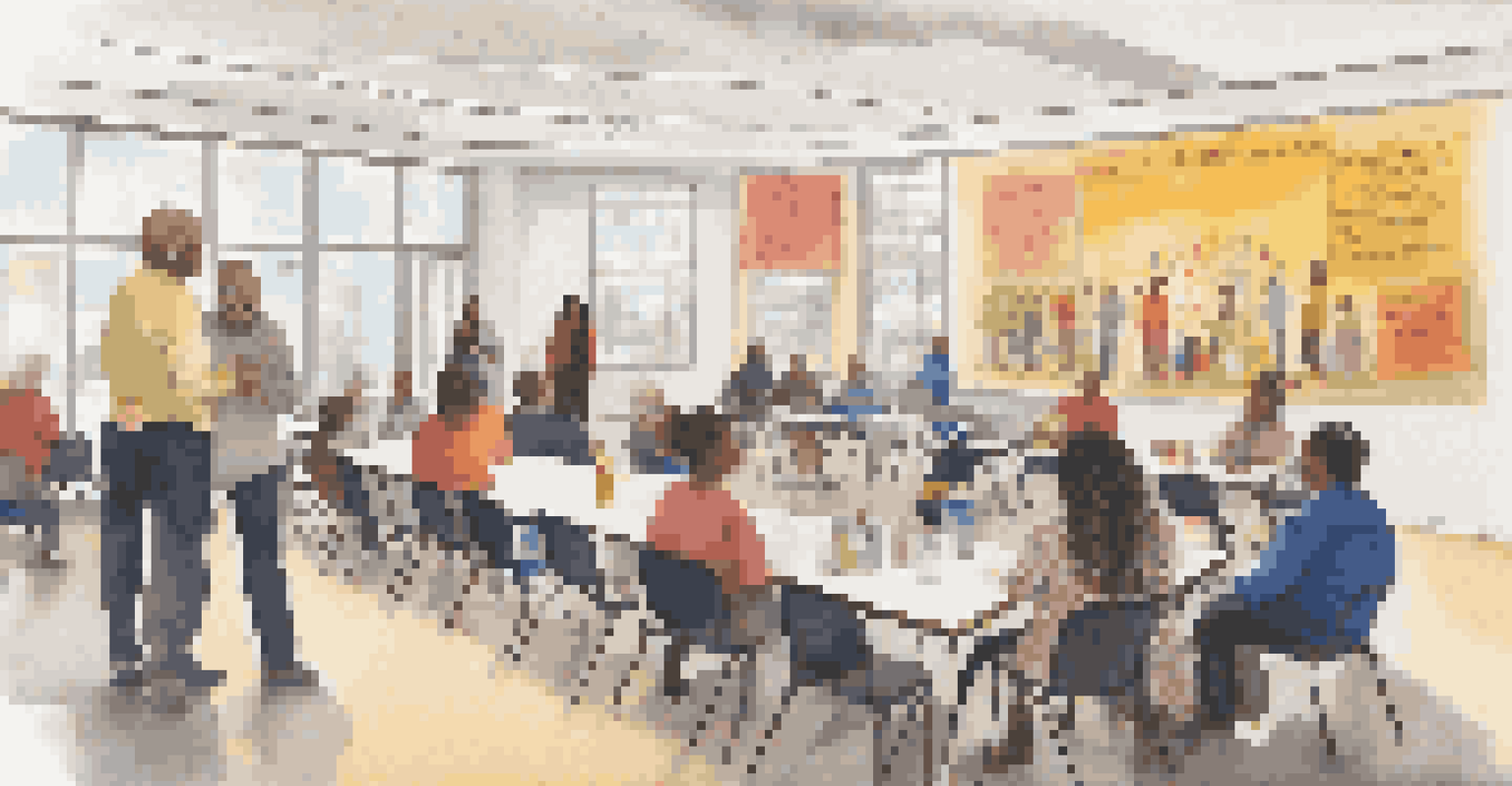Service-Oriented Mindset: Cultivating Empathy in Communities

Understanding the Service-Oriented Mindset
A service-oriented mindset focuses on meeting the needs of others. It’s about shifting your perspective from self-interest to considering what others might require. Imagine walking into a coffee shop, and instead of just ordering your favorite brew, you take a moment to ask the barista how their day is going. This small shift in thinking can lay the foundation for deeper connections.
The best way to find yourself is to lose yourself in the service of others.
When communities embrace this mindset, they become more inclusive and supportive. Each individual feels valued beyond their roles or contributions, fostering a sense of belonging. It’s like being part of a team where everyone plays a vital part, not just in achieving goals, but in uplifting each other.
Ultimately, adopting a service-oriented mindset encourages individuals to actively listen and respond to the needs of those around them. This leads to stronger relationships and a more cohesive community, where empathy thrives and everyone feels empowered.
The Role of Empathy in Community Building
Empathy is the ability to understand and share the feelings of another. In community contexts, it acts as a bridge that links individuals together. Think of empathy as the glue that holds diverse individuals together, allowing them to navigate challenges collectively.

When community members practice empathy, they create a supportive environment where everyone feels heard. This can be particularly crucial during difficult times, such as natural disasters or economic hardship. People rally together, provide support, and share resources, demonstrating the power of collective empathy.
Empathy Enhances Community Bonds
Practicing empathy allows community members to understand and support each other, leading to stronger, more cohesive relationships.
Moreover, empathy can spark collaborative initiatives that address community needs more effectively. For instance, local organizations might come together to offer workshops or support groups, showcasing how empathetic actions can lead to tangible benefits for the entire community.
Cultivating Empathy Through Active Listening
Active listening is a key skill in cultivating empathy. It involves fully concentrating, understanding, and responding thoughtfully to what someone else is saying. Picture a conversation where instead of planning your next response, you genuinely focus on the speaker's words and emotions.
Empathy is about finding echoes of another person in yourself.
By practicing active listening, individuals show that they value others' perspectives. This can encourage open dialogue and build trust within the community. When people feel heard, they’re more likely to share their thoughts and feelings, creating a richer tapestry of communication.
Moreover, active listening can lead to greater understanding of community issues. As members learn about each other’s experiences, they become more aware of the challenges faced by their neighbors, paving the way for compassionate action and support.
Building Trust Through Service Initiatives
Service initiatives are practical ways to demonstrate a service-oriented mindset. When community members come together for a common cause, like a neighborhood clean-up or food drive, they build trust and camaraderie. These shared experiences can transform strangers into friends, reinforcing the idea that everyone is working towards a common goal.
Trust is crucial for fostering an empathetic community. When people trust one another, they’re more likely to be vulnerable and share their challenges, leading to deeper relationships. This, in turn, creates a supportive atmosphere where individuals feel safe reaching out for help.
Active Listening Fosters Trust
Engaging in active listening builds trust within communities, encouraging open dialogue and deeper connections among individuals.
Additionally, service initiatives can highlight the diverse needs within a community. By engaging with different groups, individuals can learn about unique challenges and perspectives, further enhancing their empathy and understanding.
Creating Inclusive Spaces for Everyone
Inclusive spaces are environments where everyone feels welcome and valued. This can be achieved through thoughtful design and intentional community practices. Imagine a community center that offers programs for all ages and backgrounds, encouraging diverse participation and interaction.
When communities prioritize inclusivity, they naturally cultivate empathy. Members become more attuned to the varied experiences and struggles of others, creating a richer understanding of what it means to belong. This awareness can challenge stereotypes and break down barriers, fostering a genuine sense of community.
Moreover, inclusive spaces often facilitate conversations that might not happen otherwise. As individuals from different backgrounds share their stories, they contribute to a collective narrative that honors diversity and promotes empathy among community members.
Empathy in Action: Real-Life Examples
There are countless examples of empathy in action within communities. For instance, during the COVID-19 pandemic, many neighborhoods organized mutual aid groups where volunteers helped deliver groceries to those unable to leave their homes. This act of kindness not only met immediate needs but also strengthened community bonds.
Another great example is community gardens, where individuals come together to grow food and share their harvests. These gardens not only provide fresh produce but also foster relationships and understanding among diverse community members. As individuals work side by side, they learn about each other’s lives and experiences.
Inclusivity Cultivates Understanding
Creating inclusive spaces encourages diverse participation, helping community members appreciate each other's experiences and challenges.
These real-life examples demonstrate how empathy can manifest in practical ways. When individuals commit to serving others, they create ripple effects that enhance the overall well-being of their community.
Sustaining a Service-Oriented Mindset
Sustaining a service-oriented mindset requires ongoing effort and commitment. It’s essential for individuals to regularly reflect on their actions and consider how they can continue to serve others. Think of it as a muscle that needs to be exercised; the more you practice empathy and service, the stronger it becomes.
Community workshops and training sessions can be valuable resources for maintaining this mindset. By offering opportunities for skill development and discussion, communities can keep the conversation alive and encourage continuous growth. This also allows for the sharing of success stories and challenges faced, which can inspire others.

Lastly, celebrating acts of kindness and empathy within the community can reinforce the importance of this mindset. Recognizing individuals or groups for their service can motivate others to engage and contribute, creating a culture where empathy is celebrated and sustained.